Make green tea kombucha for a lighter, fizzier taste than when made with black tea. This kombucha recipe is easy to make and turns out with a lovely mild flavor and is full of probiotic goodness.
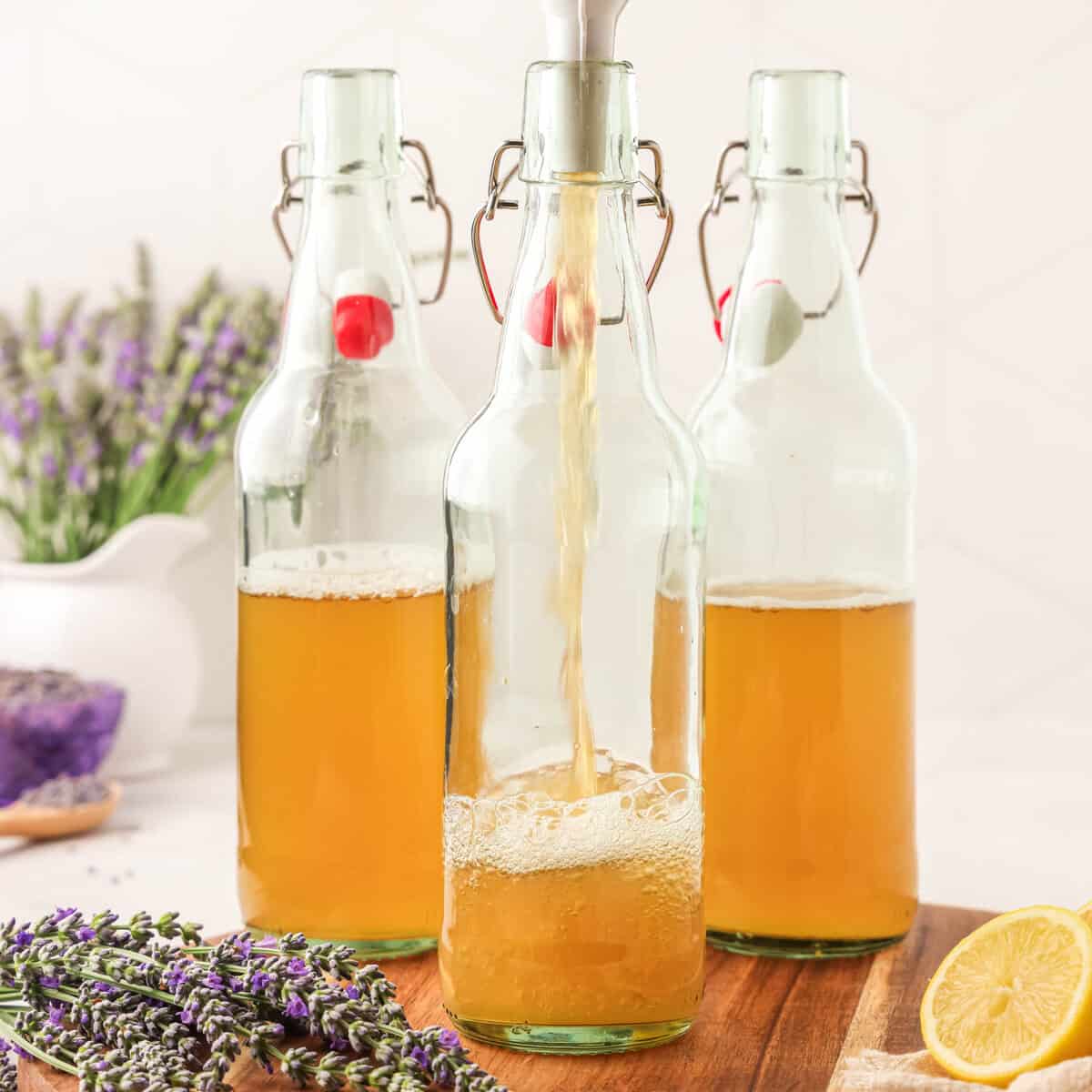
Want to save this post for later?
All About Green Tea Kombucha
Kombucha can be made from almost any tea, and is most often made with black tea. The yeast in the SCOBY (Symbiotic Colony of Bacteria and Yeast) feeds off of caffeine and sugar.
Since black tea has more caffeine than other teas, it is a perfect candidate for fermentation. But, don’t rule out green tea! It makes a lovely, light flavored, extra fizzy kombucha brew.
Not to be confused with jun kombucha which is made with green tea and honey, this green tea kombucha is just the same as a traditional brew with black tea and uses sugar.
Also, Jun kombucha needs a jun SCOBY, so it’s in a world of it’s own. This green tea kombucha recipe calls for a regular kombucha SCOBY, the same type you’d use for brewing black tea kombucha.
With that said, however, your SCOBY might need a black tea boost for every few batches of green tea brewed, since it feeds off of caffeine. If you rotate your teas for brewing kombucha, you should have a lovely living and multiplying SCOBY!
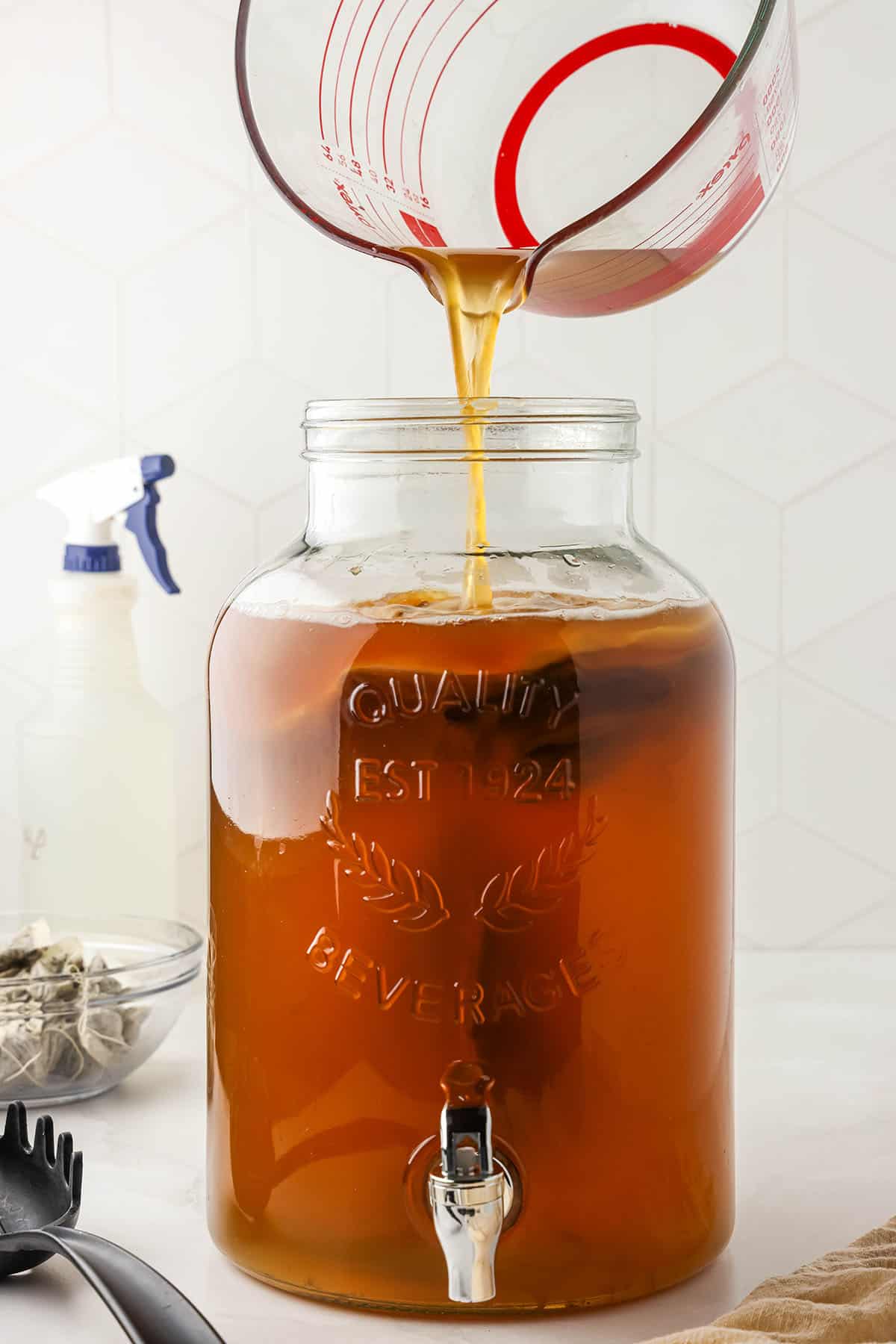
It’s Actually All About The SCOBY
This recipe is just as simple as my basic kombucha recipe, you can find more information all about SCOBYs there too. If you’re new to brewing kombucha, a SCOBY is what makes kombucha ferment and makes it fizzy.
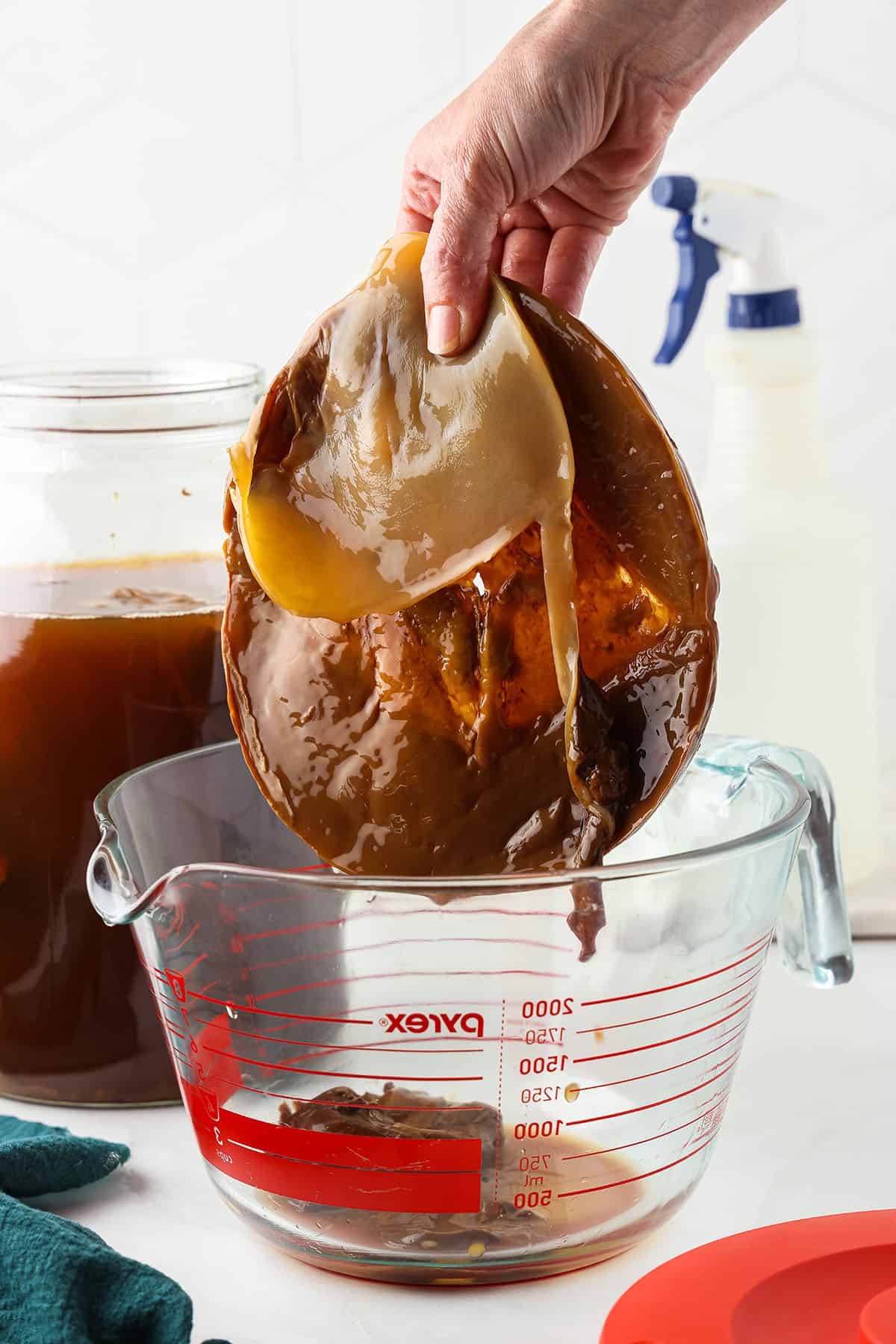
It looks kind of like a slimy pancake, but it is full of live bacteria and is actually really good for you. If you have friends who brew, you can get an extra SCOBY from them to brew your own ‘booch.
Or, buy a SCOBY from Kombucha Kamp. The mother culture comes in a bag with kombucha starter that you can pour right in along with your tea to get your fermentation off to a good start.
Green Tea Kombucha Recipe
I’d be remiss if I didn’t start off with an explanation of the basic equipment one needs to brew kombucha. It’s a fun project that is a science and a true art at the same time! Here’s what you need to get started.
- A one gallon wide mouth glass jar
- Cheesecloth to cover the jar during the fermenting process
- Flip top bottles
That’s it! It really is simple. Once you have the science part down and green tea kombucha successfully brewed, the creative art comes in to flavor it with a second ferment such as rose, dandelion, or strawberry.
Ingredients
First things first! Gather your ingredients to brew green tea kombucha for this lovely probiotic rich fermented drink.
Non-chlorinated water: It’s important to note that it’s necessary to use non chlorinated water, since most public water systems are chlorinated. Opt for filtered or bottled water, as chlorine doesn’t work well with the fermentation process.
Green tea bags: I like to use organic green tea.
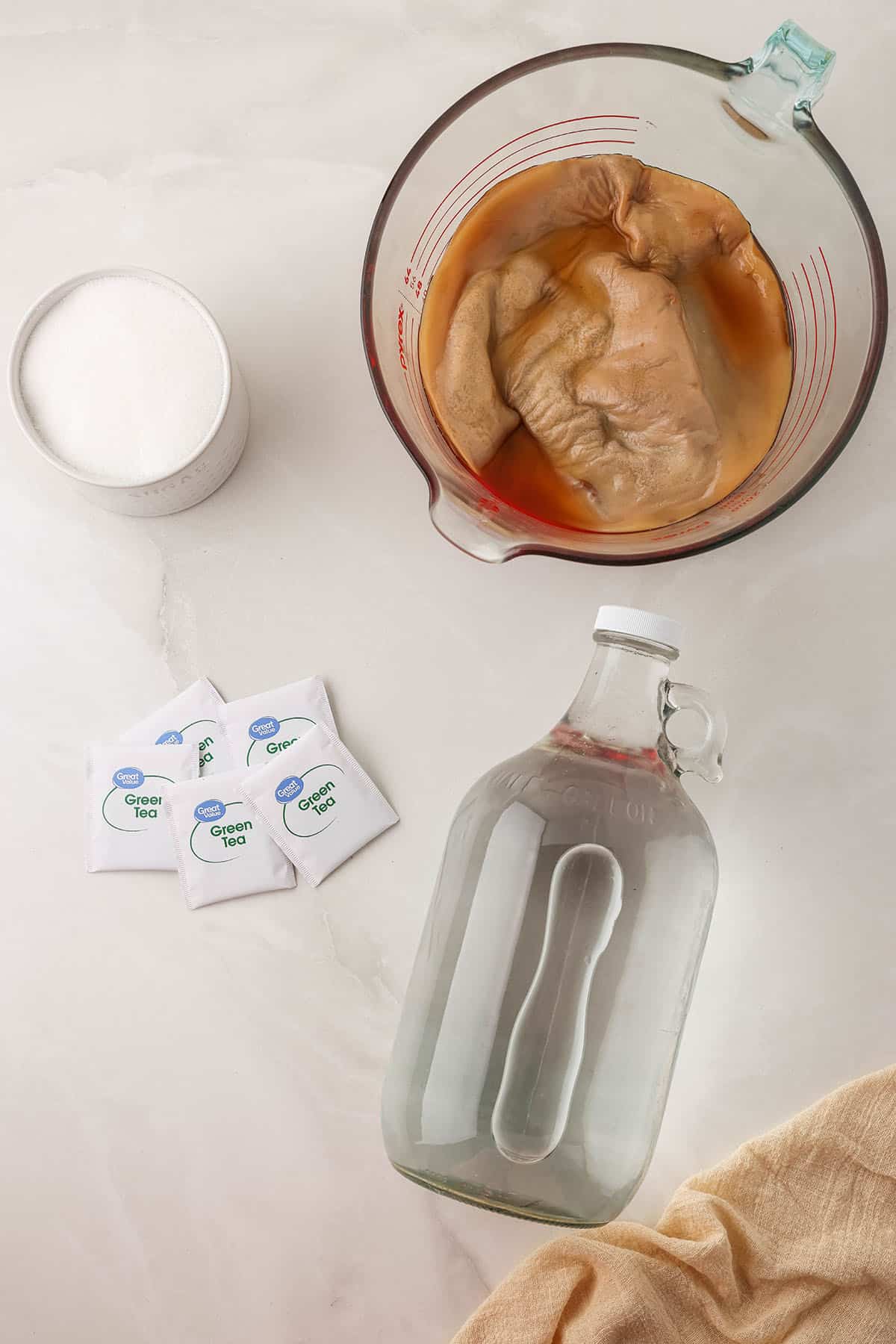
Sugar: Organic granulated sugar works best! Don’t worry about a high sugar content, since the SCOBY process the majority of it during the fermentation.
Kombucha SCOBY: If you have a friendly neighborhood source of a fresh living SCOBY, use that! Otherwise I recommend the mother culture from Kombucha Kamp.
Kombucha starter: This can be whatever kombucha liquid the SCOBY lives in, whether it be your own previous brew, one from your neighborhood SCOBY dealer, or the kombucha that comes with your SCOBY mother purchased online.
Note: If your SCOBY doesn’t come with very much kombucha starter, store-bought bottled plain kombucha works just fine as a starter.
How to Make Kombucha with Green Tea
To make the tea, add the water and the tea bags to a large pot, stirring to submerge the tea bags.
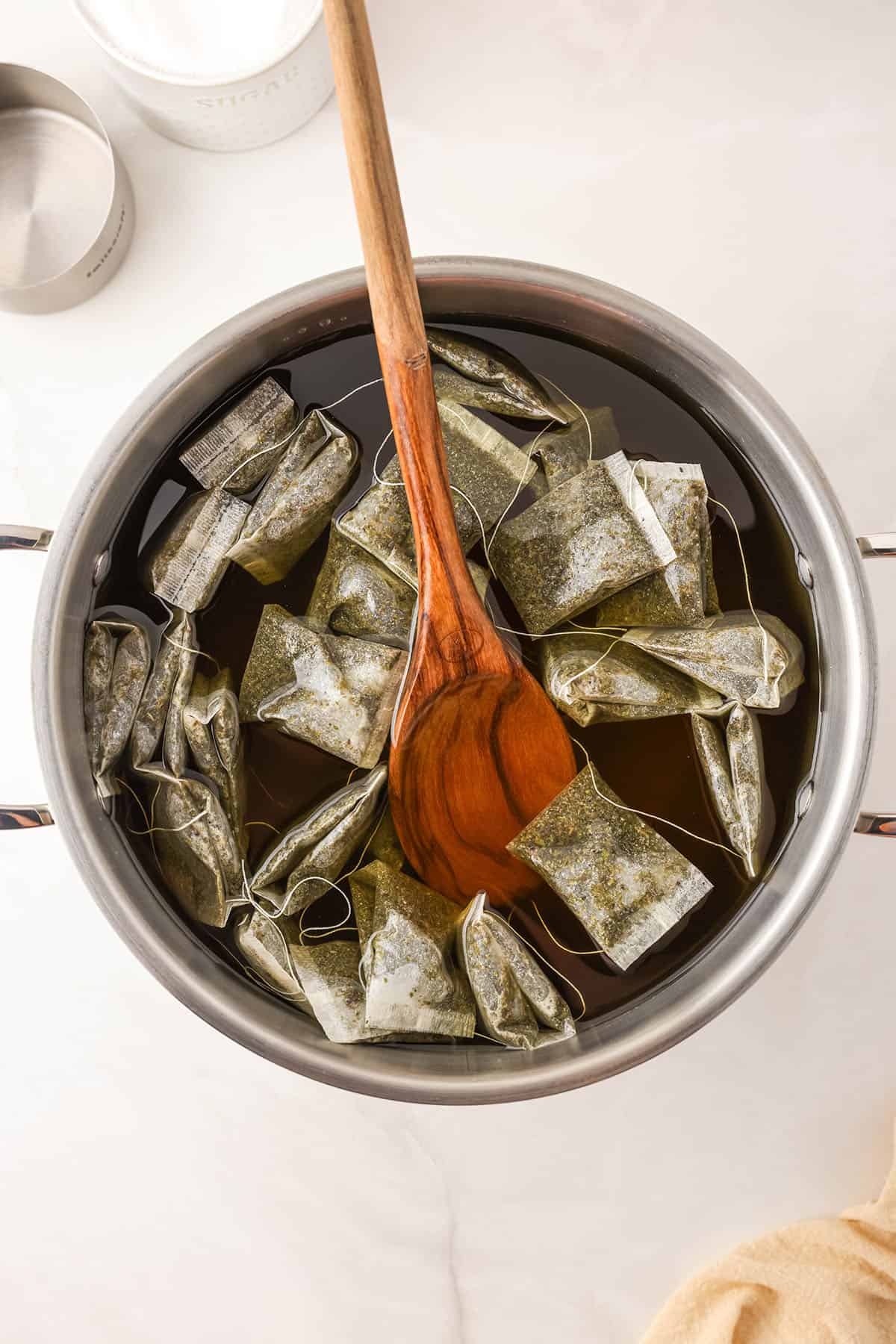
Then add the sugar and stir it until it completely dissolves, cover the pot and let the tea cold brew for 8-24 hours.
Note: These instructions make cold brew green tea for a lighter, less bitter result. It’s ok to hot brew the tea, just make sure the it cools down completely to room temperature before adding the SCOBY.
Once the tea has brewed, remove the tea bags with a slotted spoon. Then transfer the tea to a gallon jar, making sure to leave sufficient room for the SCOBY and kombucha starter.
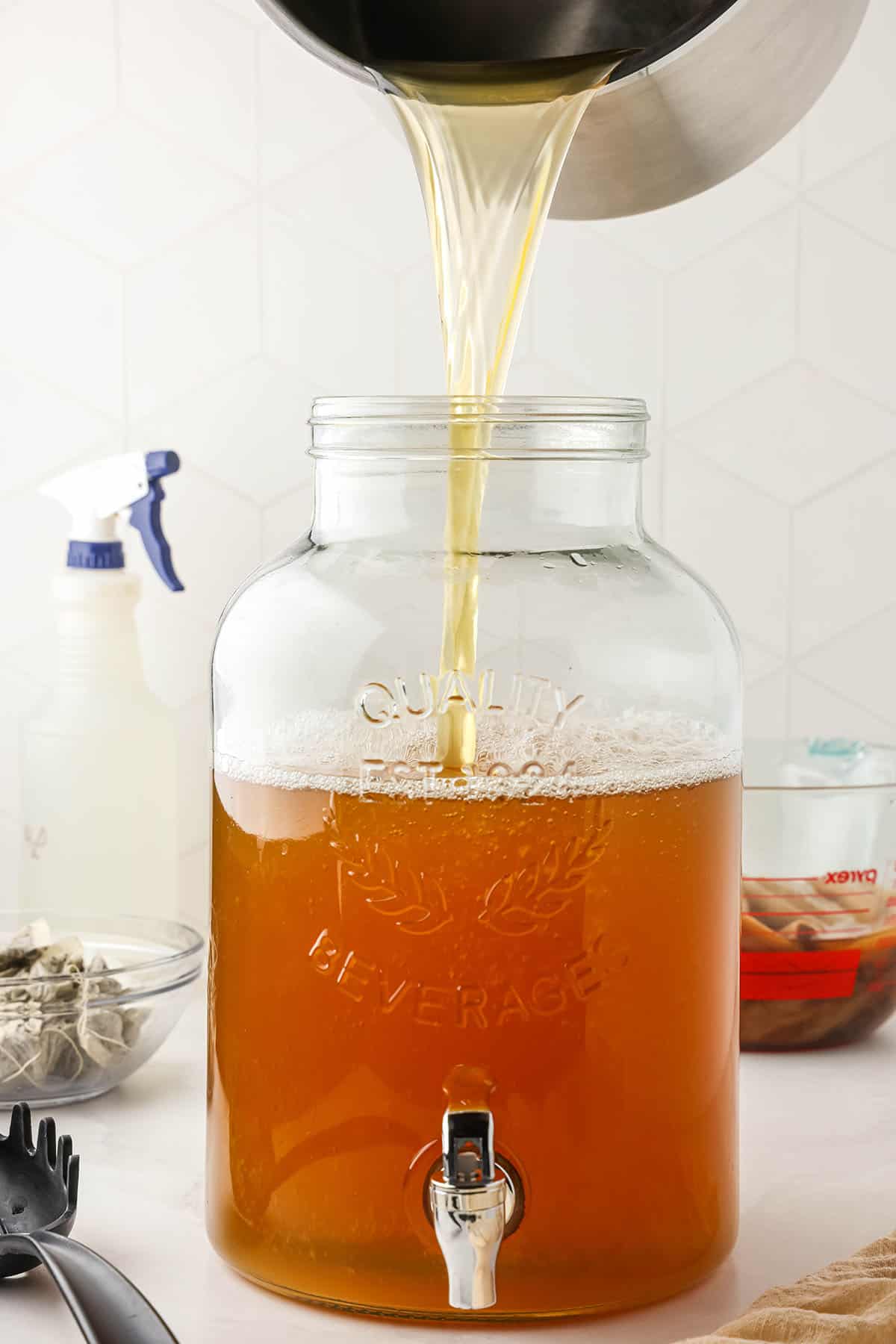
Next, add the kombucha starter to the tea, and then add the SCOBY into the jar.
Note: When you add the SCOBY into the tea, it may float and it may sink, either way is ok. Don’t stress!
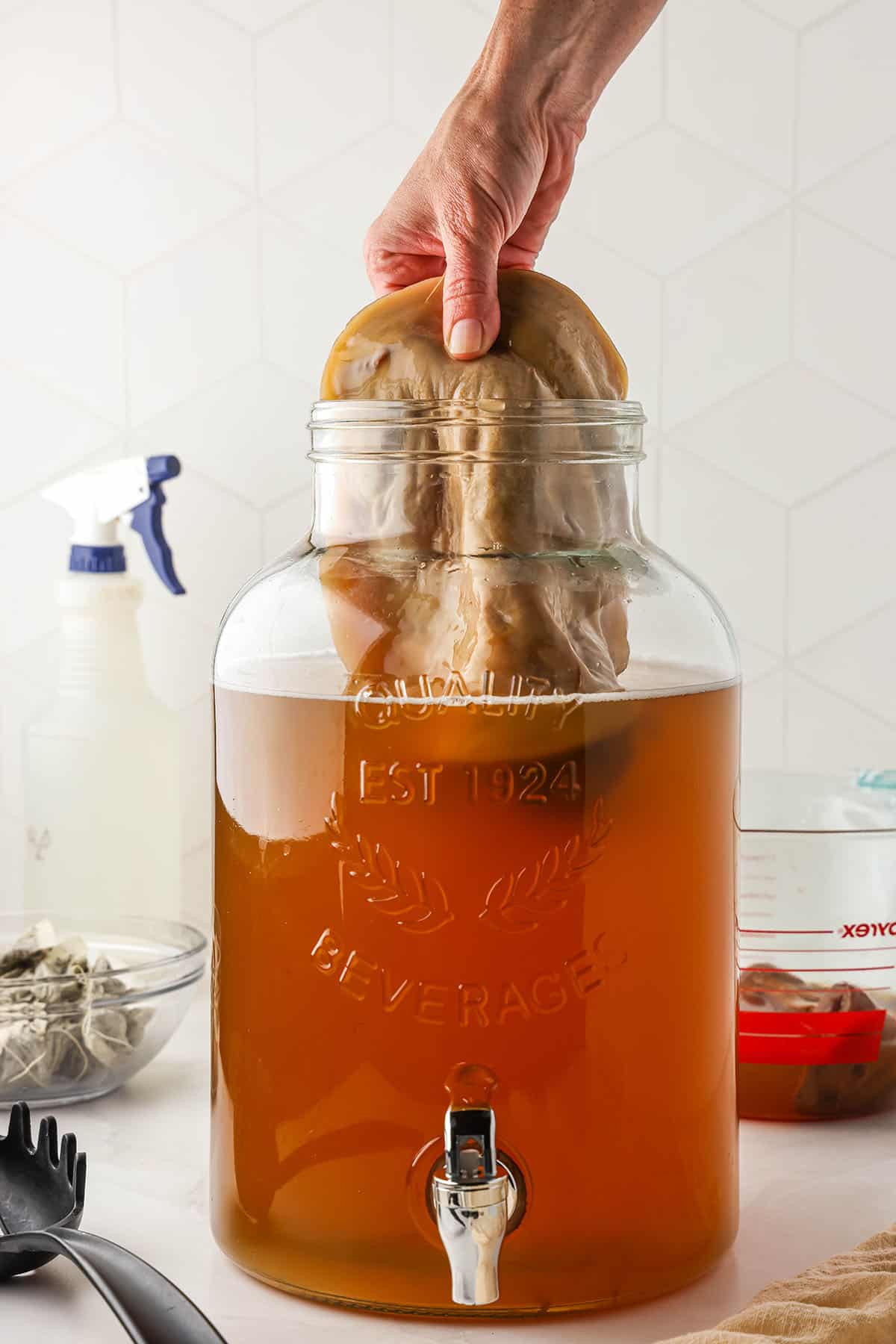
Cover the jar with cheesecloth and a rubber band and put it in an out of the way spot away from direct sunlight.
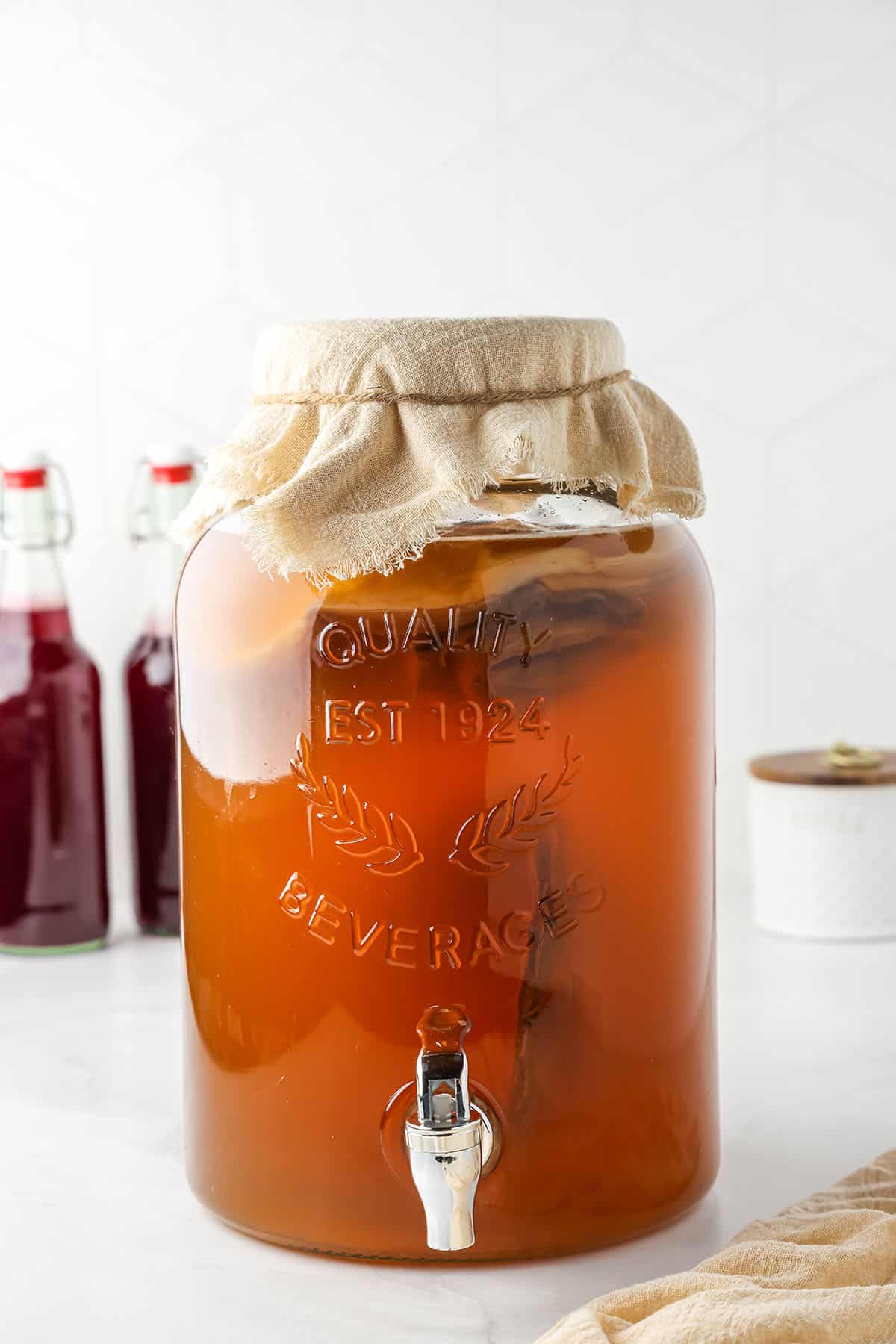
Green tea kombucha takes anywhere from 1-3 weeks to fully ferment. Once it’s ready, it will taste slightly vinegary and will have formed a new baby SCOBY on the surface of the kombucha.
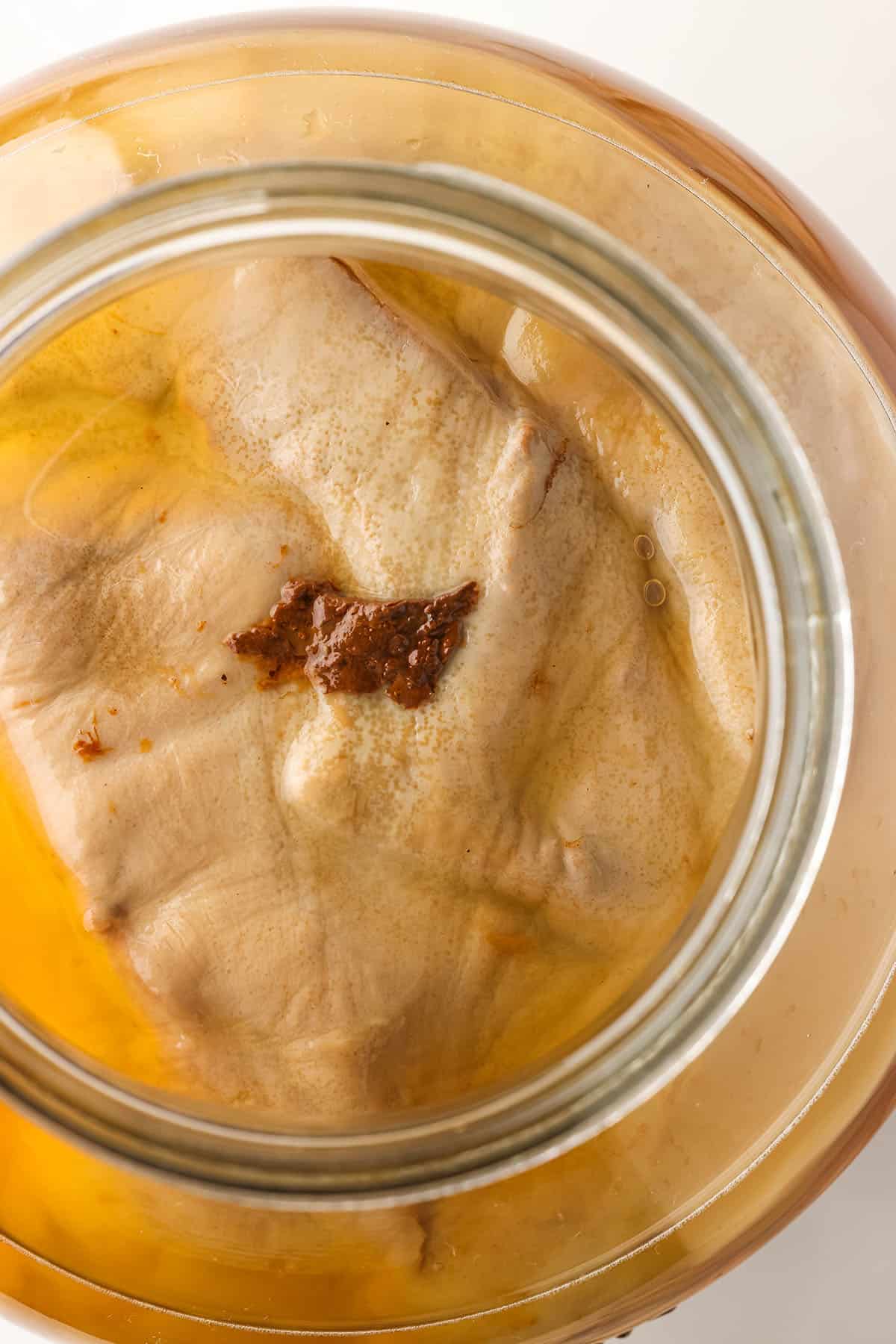
Your Next Brew Adventure
Now that you have a successful batch of fresh and fizzy green tea kombucha and a brand new baby SCOBY, you can reserve the SCOBY along with 2 cups of kombucha to starter to make a new batch!
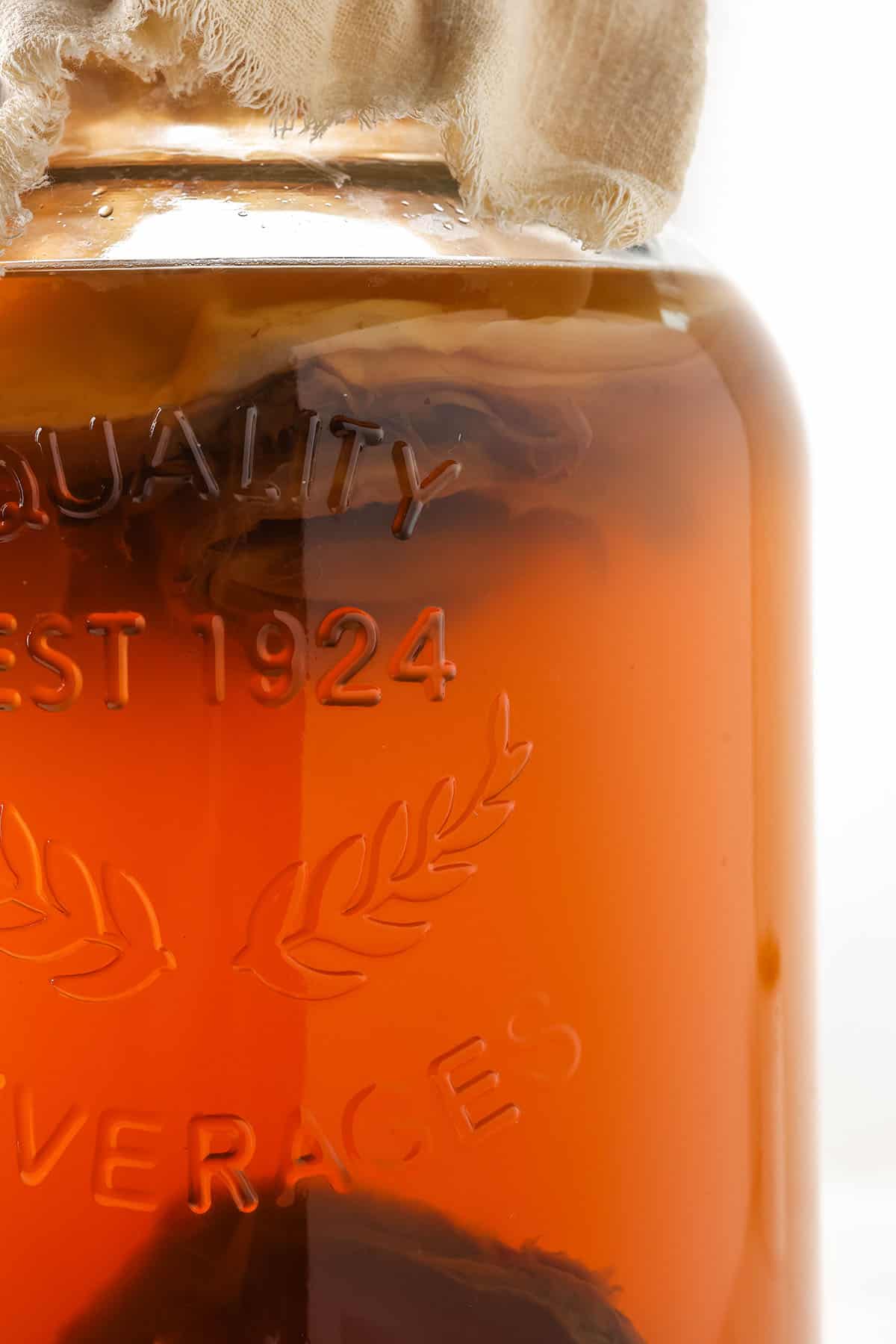
The brewed kombucha can go in bottles in the refrigerator to stop the fermenting, and can be enjoyed as is. Or you can do a flavored second ferment in order to create a deliciously flavored, probiotic-rich soda.
Green tea kombucha is a nice alternative to black tea kombucha because it yields a lighter flavor and is perfect for floral and whole fruit kombucha second ferments. This is just the beginning!
More Fermented Drink Recipes
- Ginger Kombucha: Second Ferment
- How to Make Water Kefir
- Strawberry Water Kefir Soda
- Pine Needle Soda
- Fermented Root Beer
- Yarrow, Rose, and Strawberry Soda
Best Kombucha Flavors
- Blueberry Kombucha
- Dandelion Kombucha
- Ginger Kombucha
- Hibiscus Kombucha
- Lavender Kombucha
- Rose Kombucha
- Strawberry Kombucha
- Watermelon Kombucha
- Blackberry Kombucha
- Elderberry Kombucha
- Apple Ginger Kombucha
- Pumpkin Kombucha
Green Tea Kombucha
Ingredients
- 1 gallon non-chlorinated water
- 16 green tea bags
- 1 cup sugar
- kombucha SCOBY
- 2 cups kombucha starter
Instructions
- Add the water and the tea bags to a large pot, stirring to submerge the tea bags. Then add the sugar and stir to completely dissolve.
- Cover the pot and let the tea cold brew for 8-24 hours.
- Once the tea has brewed, remove the tea bags with a slotted spoon. Transfer the tea to a gallon jar, leaving enough room for the SCOBY and kombucha starter.
- Add the kombucha starter to the tea, then add the SCOBY to the jar. It may float and it may sink, either way is ok.
- Cover the jar with cheesecloth and a rubber band and put it in an out of the way spot away from direct sunlight.
- The kombucha will take anywhere from 1-3 weeks to fully ferment. It will taste slightly vinegary and will have formed a new baby SCOBY on the surface of the kombucha.
- Reserve the SCOBY and 2 cups of kombucha to start a new batch.
- You can bottle and refrigerate the fermented kombucha and enjoy it as is, or you can do a flavored second ferment in order to create a delicious, probiotic-rich soda.
Notes
- This recipe makes cold brew green tea for a lighter, less bitter result. Feel free to use a traditional hot brewing method for the green tea, just make sure the tea cools completely to room temperature before adding the SCOBY.
- Green tea kombucha is a nice alternative to black tea kombucha because it yields a lighter flavor and is perfect for floral and whole fruit kombucha second ferments.
- Since green tea contains less caffeine than black tea (SCOBY’s feed off of sugar and caffeine), you can give the SCOBY a boost by making a batch with black tea every 3-5 feedings, or you can use a 50-50 mix of green and black teas.

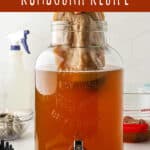

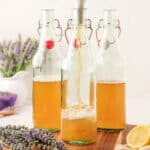

This sounds fun to try, I am curious what you mean by a lighter flavor? I don’t feel Kombucha has a strong flavor but mine can be too sour from time to time. I also do a second ferment with ginger and fruits. Thank you!
It just means that the taste is subtle or less intense compared to more robust kombucha flavor recipes.